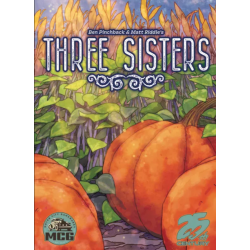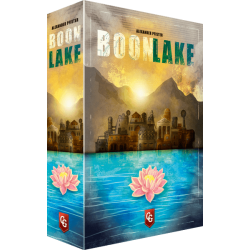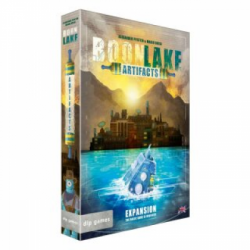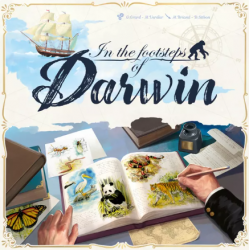No products in the cart.
Active filters
Finca
The players take the roles of Mallorcan farmers, who strive to harvest as many of the island‘s tropical fruits: figs, almonds, olives, oranges, grapes, and lemons, as possible. The players deliver their harvested fruits to the island communities, which have constantly changing requirements during the course of the game. For these deliveries, the players receive victory points. In the end, the player with the most victory points is the winner.
Undergrove
For over 300 million years, trees have traded nutrients with fungi in a vast underground network. Scientists continue to make new discoveries about this hidden world.
In Undergrove, you are a towering evergreen with an ancient symbiotic connection to the fungi in your forest. As new mushrooms appear, your options expand for converting nutrients and helping your seedlings. Using cube conversion, tile placement, area control, and a tiny bit of engine building, you’ll need to claim the most advantageous locations and optimize your actions to leave the best legacy in the forest. The player with the greatest number of successful seedlings, wins!
Windmill Valley
It’s the late 19th century, and more than 9000 windmills dot the landscape of the Netherlands, some of them purpose-built to dry the lowlands, called polders. In the polders between these windmills are fields filled with colorful tulips—the flower that once was a part of the turbulent history of the first financial bubble but is now simply a quintessential part of the Dutch landscape, especially on the famous Bloemen Route (or “Flower Route”).
Three Sisters
Three Sisters is a strategic roll-and-write game about backyard farming. Three Sisters is named after an indigenous agricultural technique still widely used today in which three different crops — in this case, pumpkins, corn, and beans — are planted close together. Corn provides a lattice for beans to climb, the beans bring nitrogen from the air into the soil, and the squash provides a natural mulch ground cover to reduce weeds and keep pests away.
John Company: Second Edition
In John Company, players assume the roles of ambitious families attempting to use the British East India Company for personal gain. The game begins in the early eighteenth-century, when the Company has a weak foothold on the subcontinent. Over the course of the game, the Company might grow into the most powerful and insidious corporation in the world or collapse under the weight of its own ambition.
Boonlake
With a group of pioneers, you have left civilization behind to settle along the shores of Boonlake, a long-forgotten region inhabited by humans long ago. This unexplored area beckons you! Become part of a new community and commit yourself to the common good. Explore the landscapes, build houses and settlements, raise cattle, produce raw materials, and develop an infrastructure. Do your best to automate these processes. Seize the opportunity to make the best of your new life in Boonlake.
Boonlake: Artifacts
In Boonlake: Artifacts, you send out your treasure hunters to find treasures and mysterious artifacts on a new map.
Have you always wondered about the vases scattered around Boonlake? Recent findings show that they are loaded to the brim with variable atomic system energy, or V.A.S.E. for short. Put your found vases into the new artifacts and secure an advantage toward victory.
[DAMAGED] Windmill Valley
It’s the late 19th century, and more than 9000 windmills dot the landscape of the Netherlands, some of them purpose-built to dry the lowlands, called polders. In the polders between these windmills are fields filled with colourful tulips—the flower that once was a part of the turbulent history of the first financial bubble but is now simply a quintessential part of the Dutch landscape, especially on the famous Bloemen Route (or “Flower Route”).
In the Footsteps of Darwin
Twenty years after his expedition around the world, Charles Darwin is writing On the Origins of Species. He wants to gather new information about animal life, particularly about continents he hardly explored. Who other than young naturalists, eager for discovery, could help the renowned scholar finish writing his most famous work?








![[DAMAGED] Windmill Valley](https://kienda.co.uk/6094-home_default/windmill-valley.jpg)








![[DAMAGED] Windmill Valley](https://kienda.co.uk/6094-medium_default/windmill-valley.jpg)
